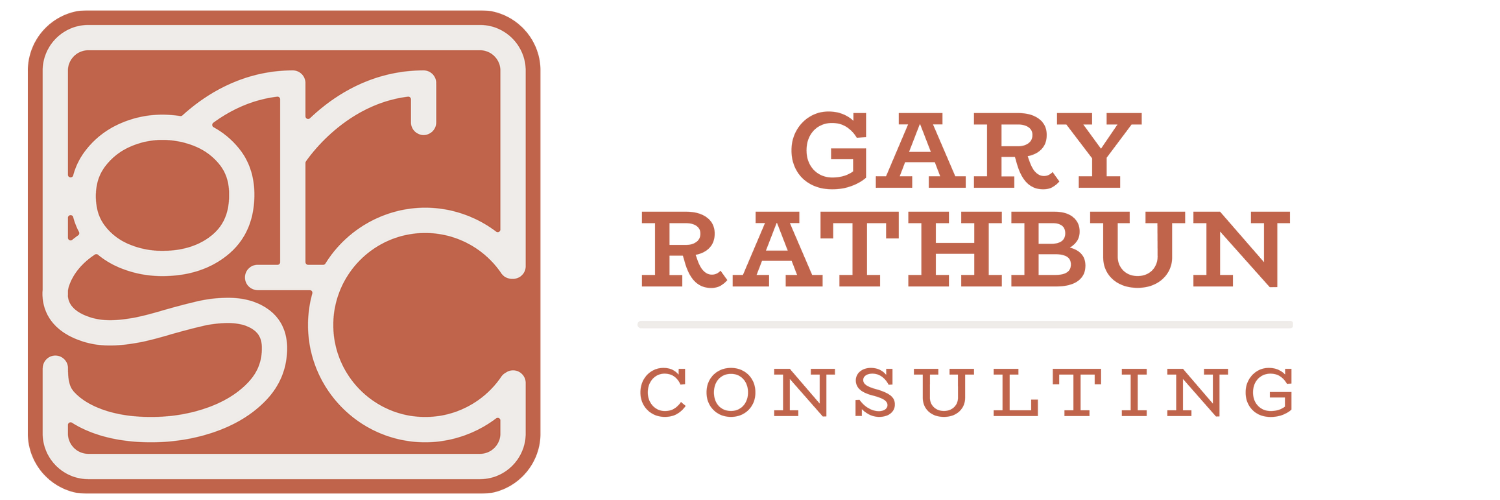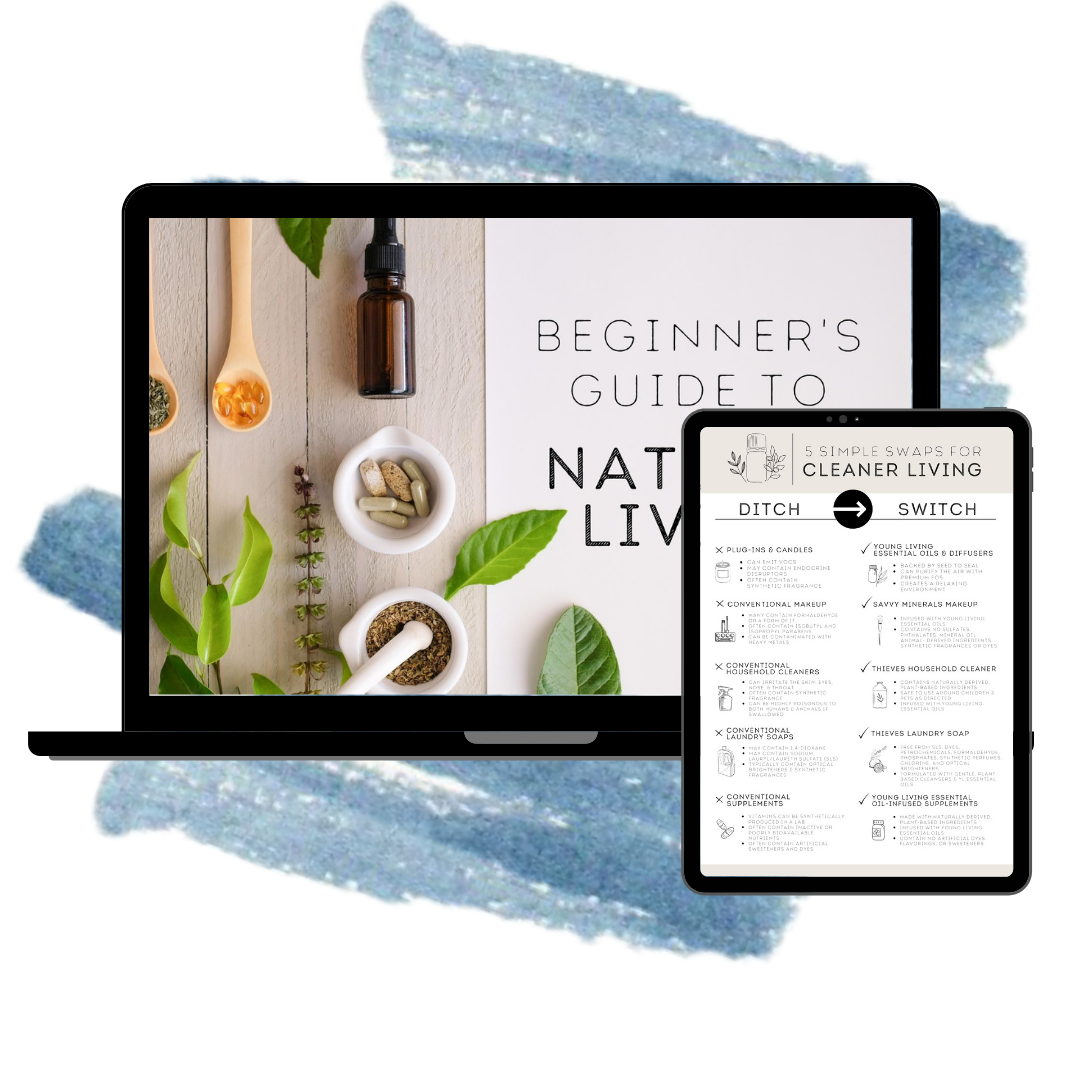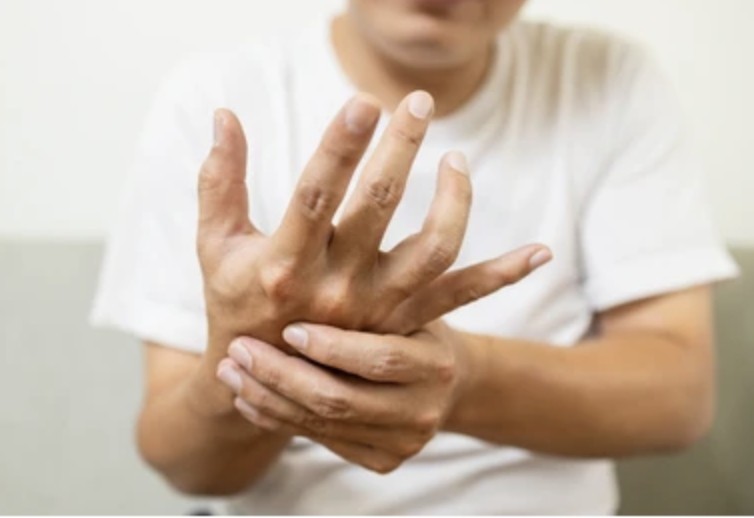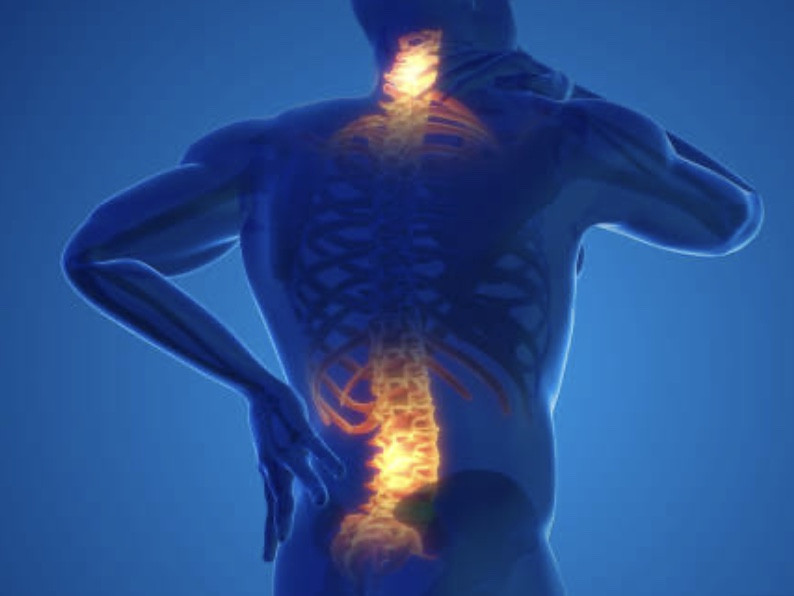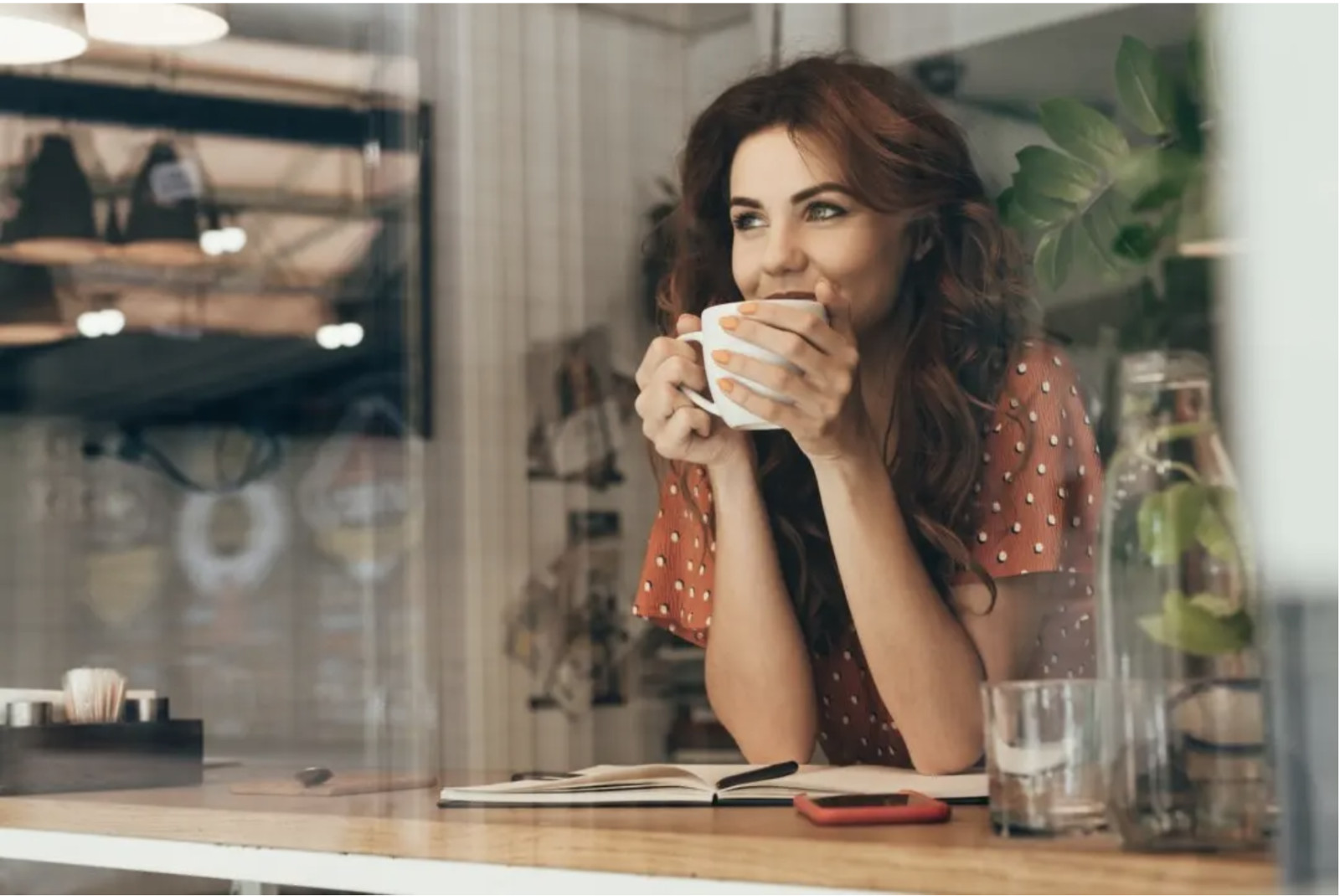
I Admit I was a Soda Junkie for many years…. until about 4 years ago when non-healthy things started to happen. I suspected….and heard…. nothing good comes with drinking “pop”, but did I listen…..NO!
Recently, I noticed a graphic on Facebook and this was too good of a message not to pass along! This ONE PICTURE confirms what my body was trying to tell me for many years!
The graphic was posted by “naturopathic.physician” out of Fairfield Connecticut. I highly recommend you look them up and follow them for additional tips.
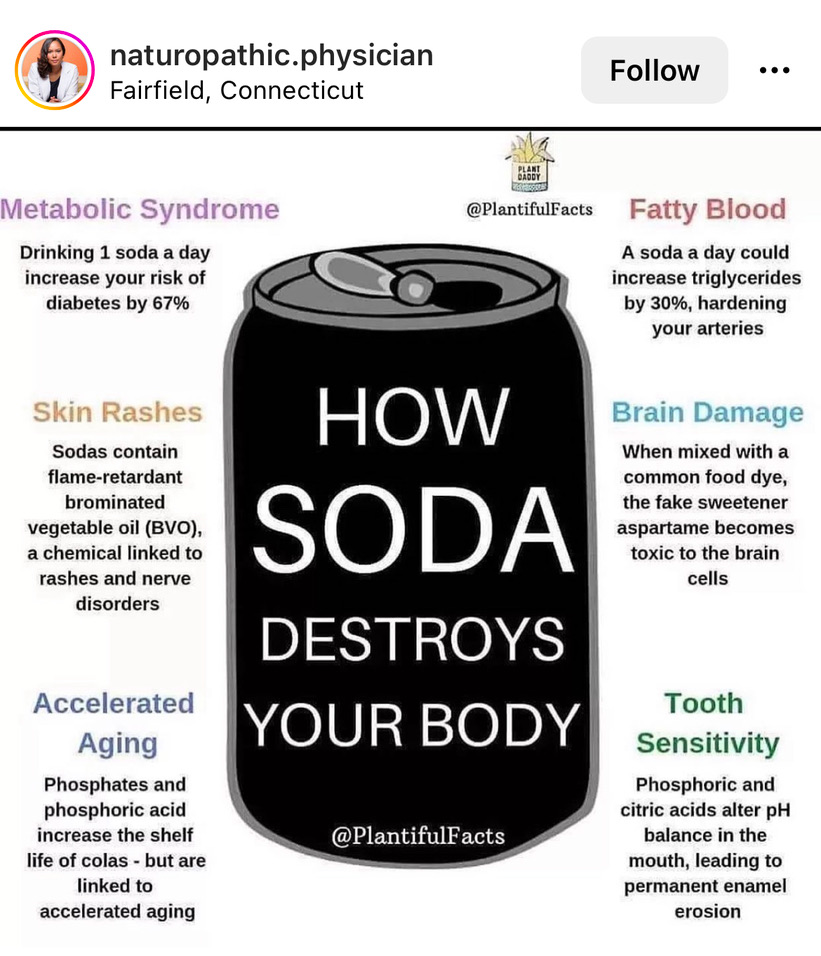
Below is How Soft Drinks…a.k.a. “Pop”, “Soda” can hurt you!
PS: it doesn’t matter what brand the soft drink is as they all have the same damaging impact!
FYI: I expanded with more information from the graphic text by “Googling” the dangers of <ingredient>.
Metabolic Syndrome
- Drinking 1 soda a day increases your risk of diabetes by 67%. Metabolic syndrome is a cluster of conditions that occur together, increasing your risk of heart disease, stroke and type 2 diabetes. These conditions include increased blood pressure, high blood sugar, excess body fat around the waist, and abnormal cholesterol or triglyceride levels.
Skin Rashes
- Soft drinks contain flame-retardant brominated vegetable oil (BVO) a chemical linked to rashes and nerve disorders. Brominated vegetable oil (BVO for short) is a food additive sometimes used to keep citrus flavoring from separating out in sodas and other beverages.
Accelerated Aging
- Phosphates and phosphoric acid increase the shelf life of colas – but are linked to accelerated aging. Phosphoric acid is deliberately added to soft drinks to give them a sharper flavor. It also slows the growth of molds and bacteria, which would otherwise multiply rapidly in the sugary solution. Almost all acidity of soda pop comes from the phosphoric acid and not from the carbonic acid from the dissolved CO2.
Fatty Blood
- A soft drink a day could increase triglycerides by 30%, hardening your arteries. Triglycerides are a type of fat (lipid) found in your blood. Elevated triglycerides may contribute to pancreatitis or the hardening of the arteries. This increases the risk of stroke, heart attack, and heart disease.
Brain Damage
- When mixed with common food dye, the fake sweetener “aspartame” becomes toxic to the brain cells. Aspartame has been linked to behavioral and cognitive problems including learning problems, headache, seizures, migraines, irritable moods, anxiety, depression, and insomnia, wrote the researchers of a 2017 study in Nutritional Neuroscience
Tooth Sensitivity
- Phosphoric and citric acids alter pH balance in the mouth, leading to permanent enamel erosion. Even with regular brushing and flossing, both regular and diet sodas can break down the enamel of teeth. Tiny bacteria live between and around teeth and, when exposed to the sugar in soft drinks, produce an acid that causes damage to tooth enamel, which eventually leads to decay and cavities.
Are you now thinking twice about downing that can of Coke, Dr. Pepper, Mountain Dew, Sprite, or Pepsi?
What are some alternatives?
This was a challenge for me as I have a “sweet” tooth. And I like the “bubbles in my drinks. So, I found two Young Living products that satisfy my affinity for bubbles and flavor. I know, you immediately wanted to chastise me for not saying water first!
However, the two products below not only cut down on my sugar intake but also increased my water consumption…. a “Win-Win” don’t you think?
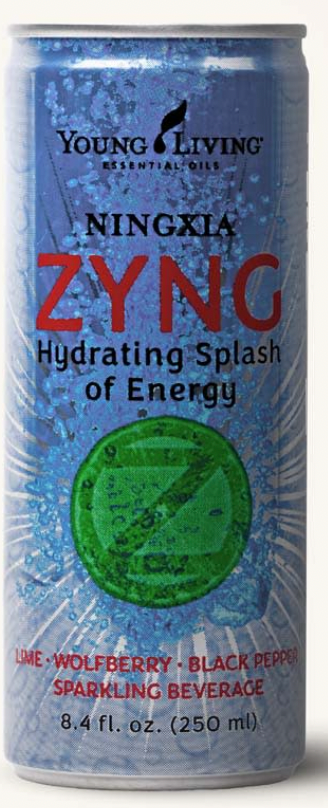
NingXia Zyng® is a refreshing, lightly carbonated drink that combines Ningxia wolfberry puree, pear and blackberry juices, and essential oils with naturally occurring caffeine for an energizing boost.*
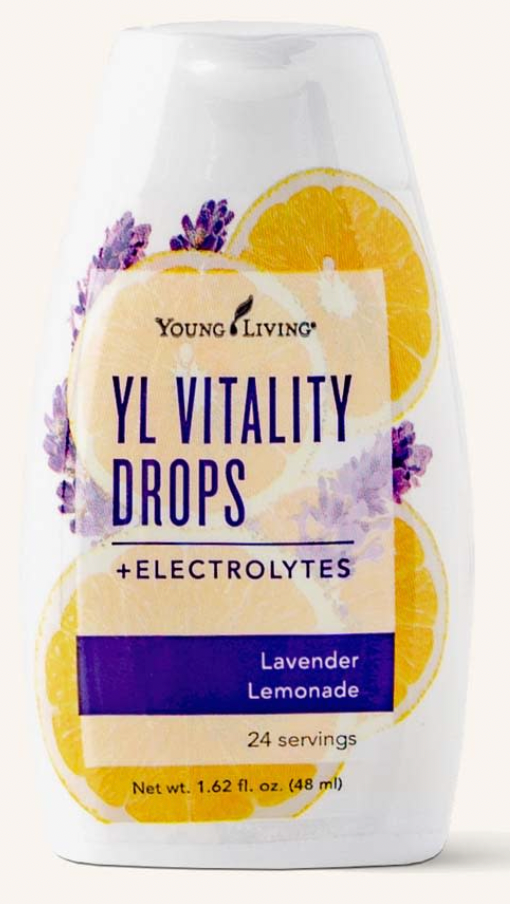

YL Vitality Drops feature Lavender and Lemon essential oils and natural electrolytes for an extra hydration boost. Kickstart your day the natural way! Add one squeeze of either flavor to 8 ounces of cold water for a clean caffeine boost backed by nature.
In conclusion
I hope this blog article has “armed” you with information on how soft drinks are not good for you! My two alternatives; “Zyng” and "Vitality Drops" from Young Living not only made me feel better but my dentist thanked me as well!
This is also a “cheaper” option than piling up those 12 packs from the grocery store! Healthier and Cost-Effective….what a combination!
If you need help ordering either or both products above, please give me a holler and I can guide you through it @ garyrathbun.com
PUT THE CAN DOWN!
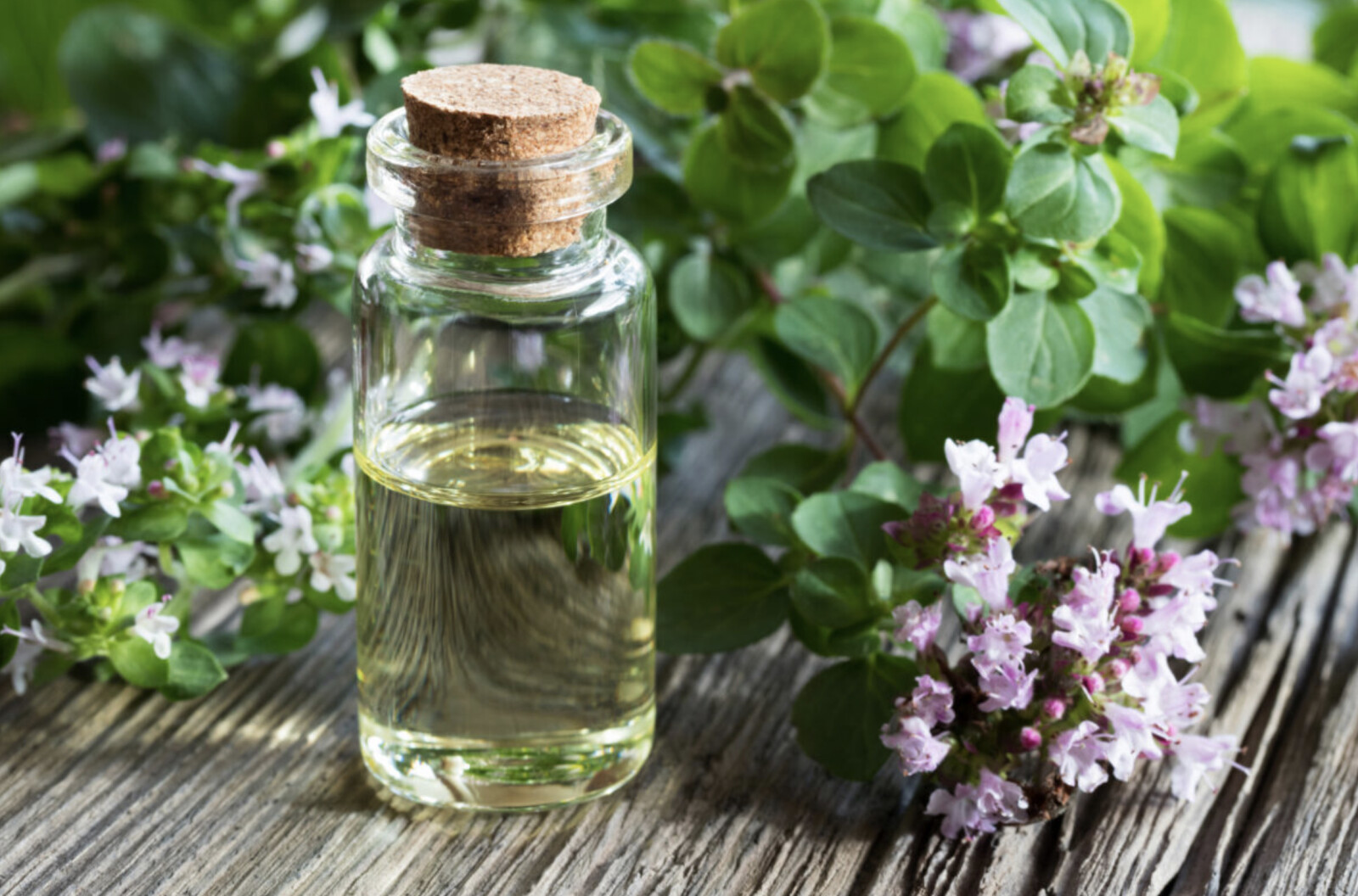
Ok, I have to admit, I did not know a lot about Oregano essential Oil. I thought it was just for food flavoring.....but BOY WAS I WRONG!
I recently read an article published by Epoch Times on 9/19 written by Joseph Mercola. The title of the article was "This Herb Can Do Wonders for Your Immune System".! The first section of the article grabbed my attention as to how much this oil can help your immune system! As a sufferer of Rheumatoid Arthritis, I was amazed I could use Oregano to help with inflammation.
WHO KNEW? Well, I didn't so I want to share this article with you as well. Below are just a few key points in Dr. Mercola's article!
Your immune system is a complex network responsible for defending your body against pathogens. Consider including this herb to fight the common cold and support your gut microbiome.
STORY AT-A-GLANCE
- Oregano is an herb with a potent antioxidant capacity that not only is high in the phytonutrients carvacrol and thymol, but has one of the higher Oxygen Radical Absorbance Capacity (ORAC) measurements in the herb family
- Oregano oil can be purchased as an essential oil. Take care when purchasing oils since some manufacturers sell adulterated products. THIS is where Young Living's "Seed to Seal" is very important!
- The extract and essential oil can be used topically to help treat fungal infections, such as athlete’s foot or ringworm. Data show diluted oil can be used in wound care dressings to prevent infections and topically to treat pain and swelling
- Oil of oregano is a popular treatment for the common cold and can be used to support beneficial bacteria in your small intestines by treating bacterial overgrowth and norovirus that triggers gastroenteritis
Oregano essential oils have been studied extensively as the plant and oil has a rich history in traditional medicine,[6] beginning in the Middle Ages when the leaves were chewed to help reduce the pain of rheumatism, toothache, and indigestion. The ancient Greeks used it to treat skin conditions and the herb was used in China for fever and upset stomach.
One lab analysis of the antioxidant ability of foods is called the Oxygen Radical Absorbance Capacity (ORAC). The measurement was used to demonstrate that foods high in antioxidant capacity could help slow the process of aging in the brain and body.[9]
The U.S. Department of Agriculture[10] reported studies published in 1999 that showed high-ORAC foods could help prevent long-term memory loss, raise antioxidant serum levels, and protect capillaries in an animal model against oxygen damage.
Have You Considered Oil of Oregano for the Common Cold?
A few studies have evaluated the efficacy of oregano essential oil or oregano oil extract against upper respiratory infections. One 2019 study[21] looked at a blend of oregano, thyme and salvia oils against upper respiratory tract viruses, including adenovirus 5, rhinovirus, influenza and RSV. The blend showed strong antiviral activity against rhinovirus and two of the three strains of influenza.
Oregano Supports Your GI Tract
Your immune system is largely supported by the beneficial bacteria in your gastrointestinal tract, referred to as your gut microbiome. Oregano oil can have an impact on supporting your gut microbiome and treating bacterial overgrowth.
Oregano oil and carvacrol are also active against bacterial agents in the kitchen that can lead to food poisoning. For example, another study[29] found oregano essential oil could remove staphylococcus aureus biofilms on stainless steel.
Finally, oregano oil also shows activity against small intestinal bacterial overgrowth (SIBO). This condition can develop after surgery, disease or medications have slowed the intestinal tract, which then sets up a breeding ground for harmful bacteria.[30] Excess harmful bacteria can cause malnutrition, diarrhea, and weight loss.
Oregano Oil Treats Several Skin Conditions
Nearly 25% of all fungal infections worldwide are caused by dermatophytes.[35] Skin infections are difficult to treat and are growing resistant to conventional medications.
One study[36] published in 2020 evaluated the efficacy of a wide range of essential oils against Microsporum and Trichophyton, two common fungi responsible for athlete’s foot and ringworm. They found that of the 65 essential oils tested, oregano was in the top five most potent.
The anti-inflammatory and antimicrobial properties of oregano oil make it an option for treating acne and eczema.
Wound infections present a significant health care challenge, costing Medicare up to $96.8 billion every year.[40] One study[41] demonstrated that the combination of turmeric and oregano extracts may be an effective addition to wound care dressings for diabetics and non-diabetics. Using relatively low concentrations, it demonstrated antibacterial and anti-inflammatory properties.
A second study[42] incorporated oregano essential oil into antimicrobial wound dressings and found concentrations of 5% inhibited all the tested strains of bacteria, including Staphylococcus aureus, MRSA, and E coli.
Pain and Swelling Respond to Oregano Oil
A chronic inflammatory response is a characteristic symptom of rheumatoid arthritis. By 2018, researchers[45] were looking at the effect carvacrol had on fibroblast-like synoviocytes, which play a role in the chronic inflammatory process found in rheumatoid arthritis. Note: This is what got my attention the most!
The anti-inflammatory and antimicrobial properties of oregano oil have made it a popular addition to skincare products. One study[46] looked at the biological activity in a human skin cell model and found evidence that suggests oregano essential oil not only is a promising candidate as an anti-inflammatory but one with anticancer properties as well.
Take Care When Choosing Your Oil
The essential oil is made from dried shoots and leaves and is extracted using steam distillation. The essential oil can then be mixed with carrier oil and used on the skin. Take care to check the label to make sure it’s made by a trusted manufacturer (queue Young Living) that sells pure, organic oils, as many “bargain” brands can be adulterated! That is all Young Living does is sell pure 100% essential oils!
Clinical herbalist Michelle Lynde writes[49] that the ideal ratio when diluting oregano oil for topical use is one part oregano oil to three parts carrier oil. A few drops of essential oil can also be added to a vaporizer or diffuser to help relieve the symptoms of allergies, sinusitis, chronic bronchitis, and coughs.
YOUNG LIVING OFFERS OREGANO

Oregano essential oil is one of the most powerful and versatile antioxidant essential oils. It may help stimulate the immune and digestive systems, strengthen the energy centers of the body, and enhance the flavor of food.*
Summary
If you thought Oregano oil was just used for cooking as I did, you are missing out on what it can do for you. Now I do warn you, the smell can lead people to think you had pasta all day long. But really, I can't do without it!
If you want to order a bottle of Young Livings Oregano, the retail cost is about $42 for a 15ml bottle. However, I can show you how to get 25% off (about $32) by becoming a Loyalty member of Young Living.
Interested? Visit my website: www.garyrathbun.com to learn how. Or just get in touch with me and I will walk you through the process!

Everyone needs water! Nearly all the body’s major systems depend on it to function and survive.
According to the Centers for Disease Control and Prevention (CDC), maintaining the proper hydration helps
- remove waste from the body
- control body temperature, heart rate, and blood pressure
- support a healthy metabolism
- protect the spinal cord and other sensitive tissues, and lubricate joints
Water does all that……YES!
However, research shows that most of us are not hydrating enough. An adequate daily fluid intake is about:
- 15.5 cups a day for men
- 11.5 cups a day for women
A recent CDC study found that U.S. adults only drank an average of 5.5 cups of water and children/adolescents 2.9 cups on a given day. “People tend to be underhydrated, meaning they aren’t getting adequate amounts of water to be in an optimal state of hydration and health,” says Starvos Kavours, Arizona State professor of the school's Hydration Science Lab.
Dangers of dehydration
Symptoms of dehydration include confusion, muscle fatigue, tiredness, dizziness, headaches, cramping, anxiousness, increased thirst, and decreased or darken urine output. “if you get too far behind on your fluids, your blood pressure can go too low, and in extreme cases, heatstroke can occur says Dr. Mitchell Rosner, Nephrologist at the University of Virginia.
Anyone can become dehydrated, but certain people are at greater risk:
- Infants and children
- Elderly
- Those with chronic illnesses
- People that work or exercise outside, particularly in hot environments
Drink up
Rosner says listening to your body is the safest way to know when to hydrate. The body has an intake thirst mechanism. We want people to keep a sense of how much fluid they are losing and drink to thirst.
Have you ever watched athletes train or compete….they ALWAYS have water or fluid handy! To them, hydration is the #1 concern!
Hydration Options
When you’re thirsty, “water should be your first choice,” Rosner says. Then people can have their own flavor choices that are palatable”. Alternatives to plain water include hydration powders, bottled sports drinks, infused water, sparkling water, coconut water, cucumber juice, herbal teas, and aloe water or aloe vera juice.
Fluids with electrolytes can be an effective way to rehydrate and refuel the body. This is my recommended method!
Energy and Sports Drinks
I don’t know about you but sometimes just drinking plain water doesn’t enthuse me. I LIKE FLAVOR! However, I DO NOT consume any Sports or Energy Drinks because of the toxic ingredients they contain and the harm they can cause.
For example:
- Frequently, energy drinks contain stimulants such as caffeine, which is not found in sports drinks. Caffeine raises blood pressure and heart rate. If you consume more than 400 mg of caffeine in a day you could experience side effects such as heart palpitations, nausea, headaches, sleeplessness, and jitters. NO THANKS!
- Energy drinks use artificial sweeteners such as Ace-k, Sucralose, Aspartame, and alcohol sugars to cover the bad taste of the other ingredients. These artificial sweeteners come say caused increased risk of cancer. NO THANKS!
- Other not so healthy ingredients are:
- Creatine – can cause kidney problems
- Ginseng – can cause headaches and diarrhea
- Synthetic Taurine – even though the body naturally produces Taurine, companies add synthetic taurine. Synthetic is always a “red flag” as the company does not have to disclose how they made it!
My Personal Favorite Hydration Tip
So, I don’t want to risk putting dangerous ingredients in my water, so I exclusively use Young Livings Vitality drops. BUT I WANT FLAVOR!
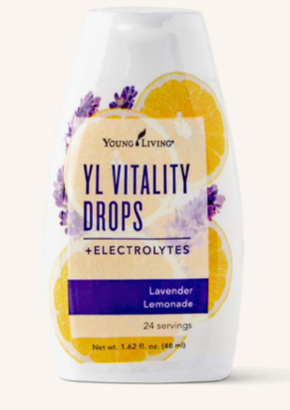
YL Vitality Drops feature Lavender and Lemon essential oils and natural electrolytes for an extra hydration boost.
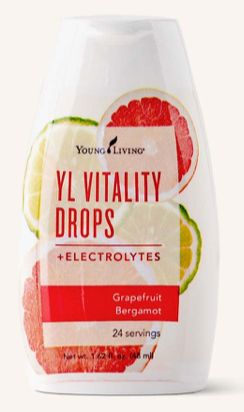
YL Vitality Drops feature Grapefruit and Bergamot premium essential oils and natural electrolytes for an extra hydration boost when added to water.
The Bottom Line
Staying hydrated is important. Make life easier on yourself by carrying a water bottle and keep it filled. Adding flavor such as the YL Vitality drops can make it tastier and, in some instances, even more hydrating. Personally, I doubled my daily water intake because of the YL Vitality drops.
YOUR BODY WILL THANK YOU!
If you would like to know how to order Young Living’s Vitality Drops, visit my website: www.garyrathbun.com or send me a message and I will walk you through the process! I can also save you 24% of retail prices…..just ask how!
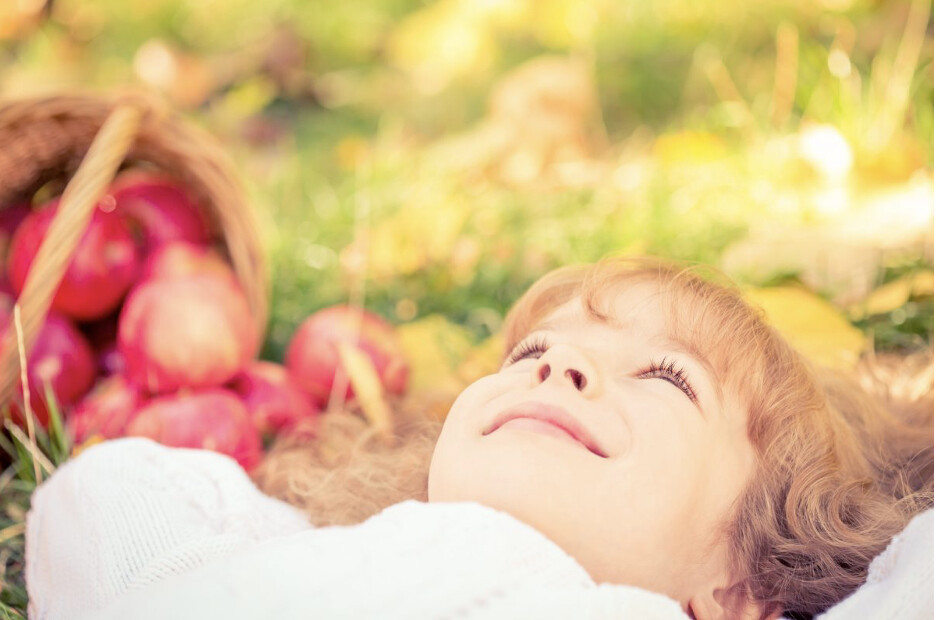
With the temperatures in the Phoenix, AZ (where I live) approaching above 110 degrees (Fahrenheit), sometimes it is just too DARN hot to be outside.....except at 3-4 am! However, not being outside robs us of the best source of Vitamin D....sunshine!
I recently came across an article published by THEEPOCHTIMES.on May 24, 2022, that highlighted that "Vitamin D" is a good source for "Gut Health" too and can be better than all of the probiotics you may be taking now! The doctor noted in the article originally started taking Vitamin D supplements to help with his sleep apnea, but it helped him in ways he did not expect!
I did not know that!
So read on and learn about how Vitamin D works in your gut and what supplements you can take to have a great "gut microbiome"! Read to the very end for my recommendation of a Vitamin D Supplement!
The Most Efficient Way to Boost Gut Health, Better Than Any Amount of Probiotics
You probably know that if you lack vitamin D, you are prone to osteoporosis. In fact, it’s much more than that. Vitamin D also has a large impact on your intestinal health.
Dr. Joel Gould, a Canadian dentist for more than three decades, has cured countless patients of dental problems. However, for most of his life, the doctor had suffered from a painful intestinal disease, Crohn’s disease.
Crohn’s disease is an autoimmune disease, in which the body’s immune system attacks the gastrointestinal tract, causing it to become inflamed. The symptoms of Crohn’s disease include abdominal pain, severe diarrhea, fatigue, weight loss, and malnutrition. The inflammation may occur in different areas of the gastrointestinal tract and may spread deeper into the intestines. Sometimes Crohn’s disease can even lead to life-threatening complications.
One time, Dr. Gould started taking vitamin D supplements to improve his sleep apnea, and three months later, something amazing happened. When he woke up one morning, he suddenly felt very light. The Crohn’s disease that had plagued him for 34 years was cured. Since then, he has never had to take hormonal drugs or antibiotics again. His anxiety and depression, as well as his sleep apnea, had all disappeared, and he was back to full health.
Dr. Gould has been actively sharing his experience ever since. According to him, no matter how much probiotics you take, or even if you get a stool transplant, as long as you don’t have enough vitamin D in your body, you can’t maintain a healthy gut microbiome.
What is the amazing relationship between vitamin D and intestinal health?
Your Intestines Are an Amazing World
Did you know that when the human gastrointestinal tract is expanded, it has a surface area of about 250 to 400 square meters, which is equivalent to a tennis court? In an average person’s lifetime, about 60 tons of food pass through the digestive tract. Isn’t that amazing?
The collection of bacteria that reside in the gut is called the “gut microbiota” or “gut microbiome.” They have been living together with their hosts for thousands of years, forming an intricate and mutually beneficial relationship. There are about 200 to 1000 species of microorganisms in the human intestine. It is estimated that they weigh a total of nearly “four and a half pounds”.
Going deeper into the gastrointestinal tract, the total number of microorganisms gradually increases. In the stomach, the concentration of microorganisms is relatively low, and their number gradually increases in the small intestine, with the highest concentration in the colon.
Vitamin D, on the other hand, is mainly absorbed in the small intestine (especially in the duodenum).
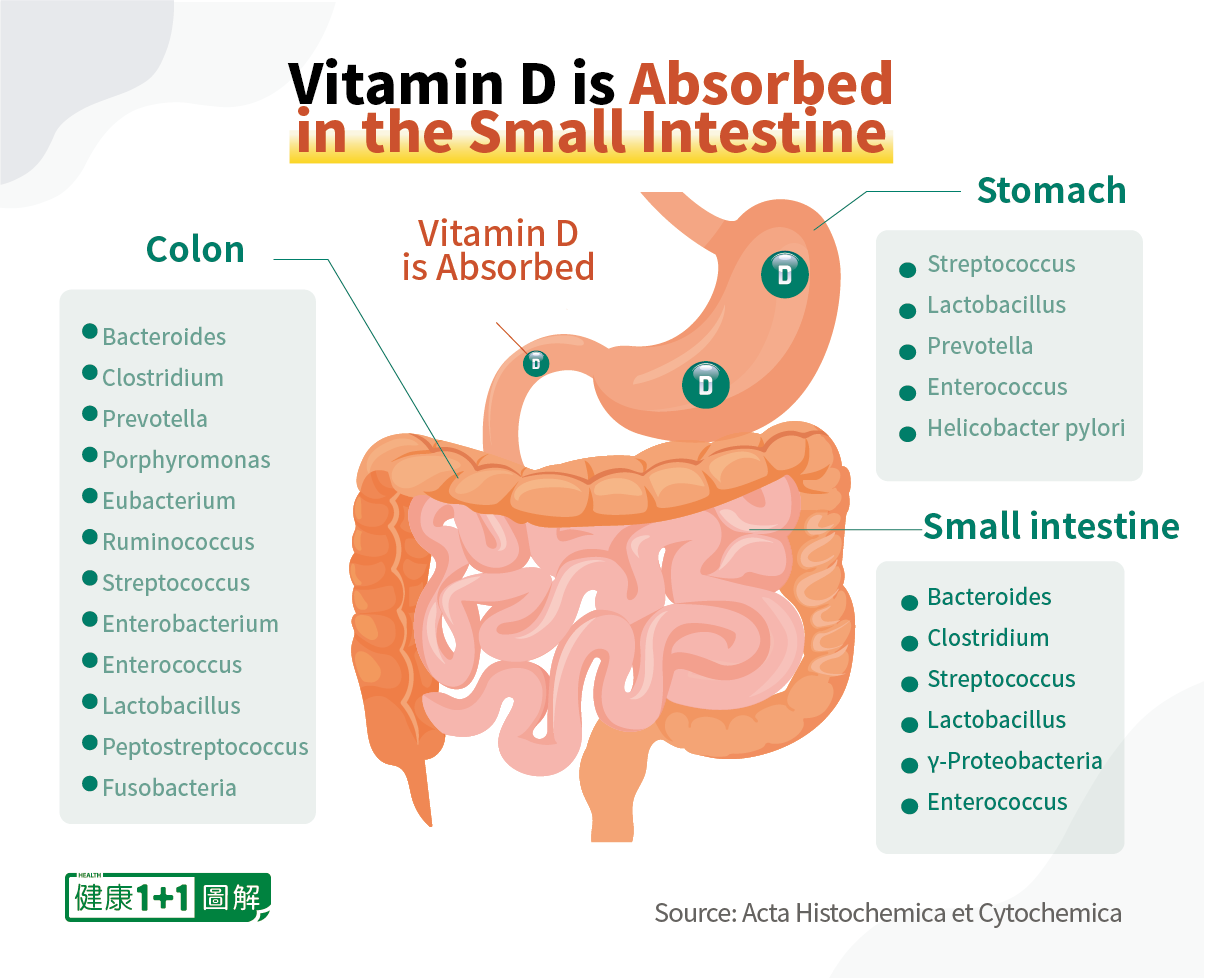
The types and numbers of intestinal bacteria are constantly changing due to the influence of diet, medications, the environment, seasons, stress, and diseases.
The intestinal microbiota are considered an “extra organ” of the human body and are vital to the health of the body. The health of intestinal bacteria also means the health of the intestine. If the intestinal flora is imbalanced, it can lead to various local and systemic diseases in the body.
Vitamin D’s First Benefit: Increases Beneficial Intestinal Bacteria
Many studies have shown that there is a significant correlation between vitamin D intake and the gut microbiota.
In a study published in the journal Nature in 2020, 80 healthy but vitamin D-deficient women took vitamin D supplements, and their gut microbiota were then evaluated by researchers. The results showed that vitamin D supplementation significantly increased the diversity of these women’s gut flora, while promoting an increase of probiotic bacteria.
Researchers in Austria studied the effects of vitamin D3 supplements on the human body. After volunteers took vitamin D3 supplements for eight weeks, the researchers sampled and evaluated the microorganisms in their stomachs, small intestines, colons, and feces. The data showed that vitamin D3 supplementation had modulated the human intestinal microbiota and had a positive effect on the improvement of gastrointestinal disorders, such as inflammatory bowel disease and bacterial infections.
Vitamin D’s Second Benefit: Protects the Intestinal Barrier and Boosts Immunity
In addition, vitamin D can also maintain the health and integrity of the intestinal mucosa.
The intestinal tract is constantly exposed to external bacteria, viruses, and toxins. The superficial barrier of the intestines is like a wall that prevents external enemies from entering. The intestinal barrier is divided into the mucus layer and the epithelial cells, and vitamin D maintains the protective function of these two parts and helps the epithelial cells hold together more closely.
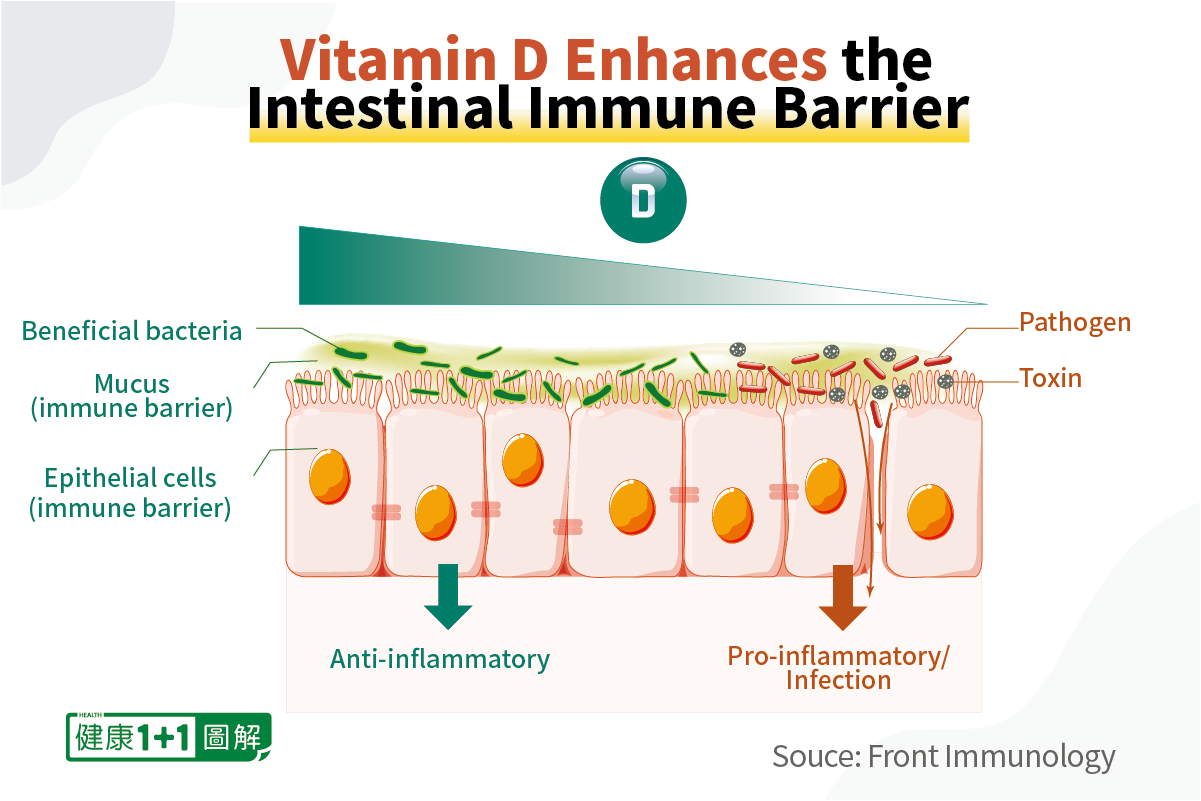
With sufficient vitamin D, the immune system of the intestines can easily perform its anti-disease and anti-inflammatory functions. Whereas if vitamin D is deficient, the intestines are highly susceptible to invasion by pathogens and inflammation.
Furthermore, vitamin D can control the innate and acquired immunities of the intestines and is an excellent preventative for autoimmune diseases.
How to Efficiently Supplement Vitamin D
The most important of the vitamin D family are vitamins D2 and D3.
Vitamins D2 and D3 are originally inactive. However, when they enter the body, the liver converts them into calcifediol, which is the form of vitamin D stored in the body; then the kidneys further convert it into calcitriol, which is the active form of vitamin D.
So, how exactly do we supplement vitamin D?
1. Efficient Basking in the Sunshine
Plants can synthesize water and carbon dioxide into nutrients through photosynthesis. Our human body can also produce vitamin D through a process similar to photosynthesis. Most of our body’s natural vitamin D comes from sunlight.
When the sun’s medium-wavelength ultraviolet B (UVB) rays hit our skin, they will convert a type of cholesterol in the skin into vitamin D3, which then enters the bloodstream.
The most straightforward and inexpensive way to get vitamin D is by basking in the sunlight.
However, if you apply a sufficient amount of sunscreen, the skin’s absorption of vitamin D will be reduced by more than 90 percent. For the most efficient sun exposure, it is recommended that you do not wear sunscreen and expose about one third of your skin to the sunlight for 10 to 20 minutes at noon, three times a week.
Noon is not only the time when the sun’s UVB rays are the strongest, but studies have also shown that the body’s most efficient production of vitamin D is between 11:00 a.m. and 2:00 p.m.
2. Consumption of High-fat Fish, Egg Yolks, and Sun-exposed Mushrooms
Foods rich in vitamin D include cod liver oil, salmon, tuna, sardines, swordfish, beef livers, and egg yolks.
Another food that is also rich in vitamin D is fresh mushrooms that have been exposed to ultraviolet light. In fact, animal-based foods provide vitamin D3, and plant-based foods, such as mushrooms that have been exposed to sunlight, provide vitamin D2.
The vitamin D level of sun-dried mushrooms is about 10 µg/100 g. So next time, before you eat mushrooms, let them get some sunlight!
3. Vitamin D Supplements
If you don’t get enough sunlight and can’t eat a lot of vitamin D-rich foods, then vitamin D supplements are a relatively easy option for you.
Vitamin D3 can be supplemented in the winter, when there is less sunshine.
Since vitamin D is a fat-soluble vitamin, it’s recommended to take the supplements with a meal to ensure absorption.
My recommendation for Vitamin D Supplements is……..
Young Livings Pure Vitamin D Supplement
 Super Vitamin D supports the immune and respiratory systems with 250 percent of the daily value of vitamin D. Vitamin D plays a key function in respiratory health through innate and adaptive defense mechanisms. Super Vitamin D also supports bone growth and healthy muscles. This highly absorbable, vegan-friendly tablet is made with lemon balm extract and Lime and Melissa premium essential oils, which support mood and hormone regulation.
Super Vitamin D supports the immune and respiratory systems with 250 percent of the daily value of vitamin D. Vitamin D plays a key function in respiratory health through innate and adaptive defense mechanisms. Super Vitamin D also supports bone growth and healthy muscles. This highly absorbable, vegan-friendly tablet is made with lemon balm extract and Lime and Melissa premium essential oils, which support mood and hormone regulation.FEATURES & BENEFITS
· Plays a key function in respiratory health*
· Supports the body’s respiratory immune system through its innate, adaptive defense mechanisms*
· Helps boost healthy immune systems*
· Supports mood and hormone regulation with vitamin D and lemon balm *
· Helps support bone growth and healthy muscle*
· Supports calcium balance and bone growth*
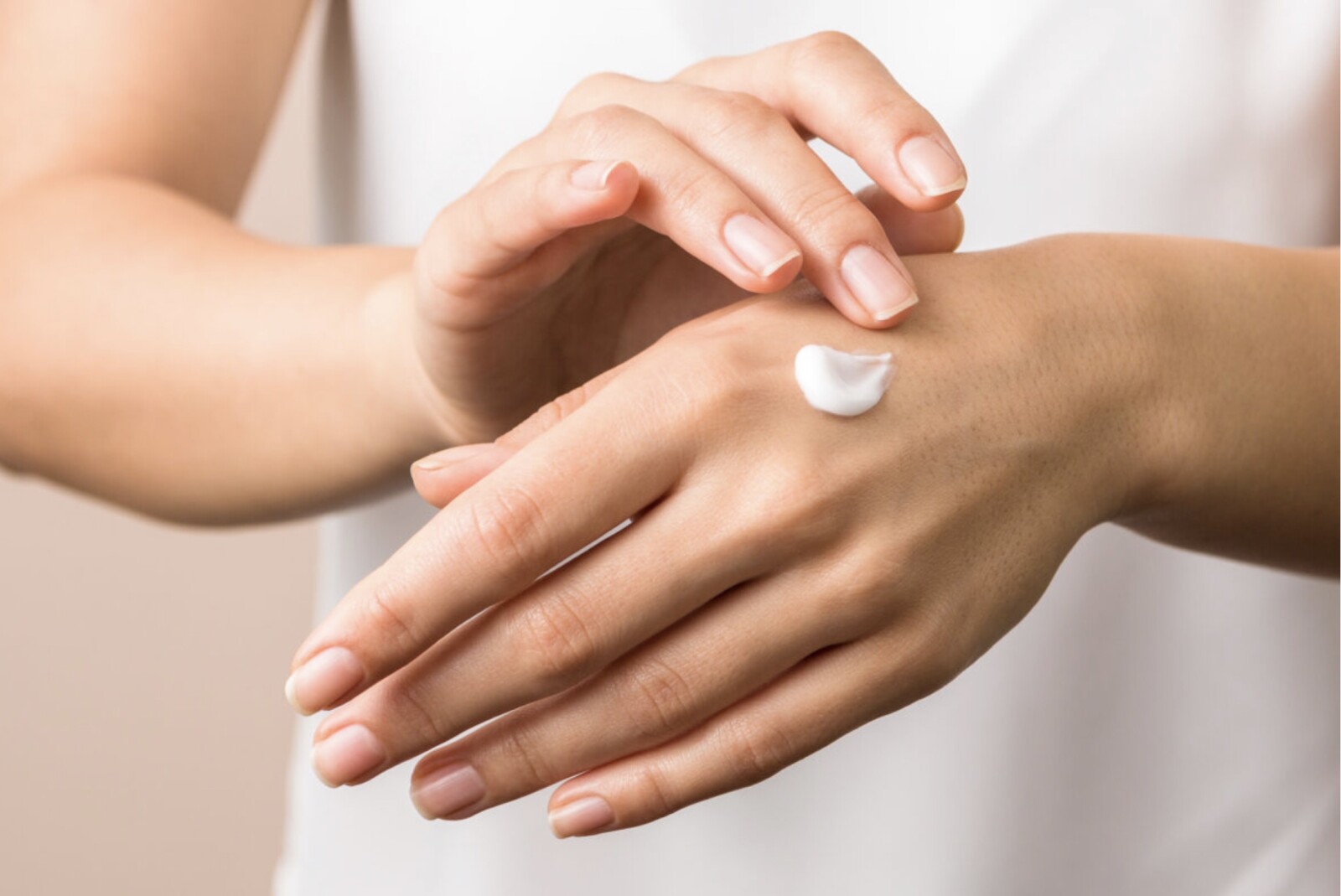
Summer is here and we have longed to get outdoors for several months. We know the importance of protecting your skin with appropriate sunscreen, but an article by Dr. Joesph Mercola, published on May 25, 2022, warns us of some hidden dangers of both "using and choosing" sunscreen.
This is a long article, but well worth the read!
One of the Worst Things You Could Slather on for ‘Protection’
Sunscreen is widely overused – and loaded with a brew of toxic ingredients that pummel human fertility, impair your neurons and threaten coral reefs.
First off, let me make it very clear that sunscreen is widely overused. There are some circumstances where it is wise and appropriate to use but those cases are few and far between. For the most part, you just need to avoid sunscreen and rely on sensible sun exposure. Get out of the sun or wear clothing the moment your skin starts to turn light pink.
Having laid that foundation, in February 2019 the U.S. Food and Drug Administration proposed new regulations[1] to “make sure sunscreens are safe and effective.” If enacted, this could have a transformative effect on the sunscreen industry as a whole.
Importantly, as I’ve noted on a number of occasions, of all the active sunscreen ingredients used in products on the U.S. market, only two — non-nano-sized zinc oxide and titanium dioxide — have been deemed safe for human use by the FDA.
Note: Young Livings Mineral Sunscreen SPF 50 Broad-spectrum Lotion only contains non-nano-sized “Zinc Oxide”. Young Living's Mineral Sunscreen SPF 50 is reef safe and free from harsh chemicals, making it the best healthy sun-exposure solution for the whole family.

Yeah, I know what you’re likely thinking. You can trust the FDA about as far as you can throw them. It’s a captured agency and essentially controlled by the very industry it is seeking to regulate. However, there appear to be no vested interests here and I believe they got it right this time.
In its proposal, the FDA admits it does not have enough scientific data to draw any conclusions about the safety of 12 of the 16 active sunscreen ingredients on its list and asks the industry to help in providing more data to perform a “rigorous assessment” of all active ingredients on the market.
Two of the 16 ingredients, PABA and trolamine salicylate, have been deemed unsafe, or not generally recognized as safe (GRAS), and are not currently in use according to the FDA. FDA wants sunscreens with an SPF of 15 or higher to provide broad-spectrum protection against both UVA and UVB rays, not just UVB as is currently the case.
Evidence of Toxicity Exists for Several Sunscreen Ingredients
One of the 12 active sunscreen ingredients the FDA claims to be unsure about is oxybenzone, found in an estimated 70% of sunscreens. This, despite studies showing this chemical, acts as an endocrine disruptor and has been linked to reduced sperm count in men and endometriosis in women.
Research by the Centers for Disease Control and Prevention shows 96% of the U.S. population has oxybenzone in their bodies, which is a testament to just how much sunscreen people are using.
Indeed, the daily use of sunscreen is one of the reasons cited by the FDA for the need to update safety regulations. People are using far more sunscreen these days, so exposure to potentially hazardous ingredients is of far greater concern than in decades past.
Oxybenzone is also lethal to certain sea creatures, including horseshoe crab eggs, and researchers warn the widespread use of oxybenzone-containing sunscreens poses a serious threat to coral reefs and sea life. This effect is what prompted Hawaiian lawmakers to ban the sale of sunscreens containing oxybenzone and octinoxate, both of which have been linked to severe coral damage.
Note: Young Livings Mineral Sunscreen Lotion is reef safe and free from harsh chemicals!
Many Sunscreen Ingredients Have Endocrine Disrupting Effects
Oxybenzone isn’t the only endocrine disruptor though. At least eight other active sunscreen ingredients are suspected of having endocrine-disrupting effects.
According to a recent Danish study, 13 of 29 sunscreen chemicals (45%) allowed in the U.S. and/or European Union have the ability to reduce male fertility by affecting calcium signaling in sperm, in part by exerting a progesterone-like effect.
Of those 13 chemicals, eight are approved for use in the U.S. These include:
- Avobenzone
- Homosalate
- Meradimate
- Octisalate (also known as octyl salicylate)
- Octinoxate (octyl methoxycinnamate)
- Octocrylene
- Oxybenzone (also called benzophenone-3)
- Padimate O
These chemicals can also be found in makeup, moisturizers, and lip balms with sunscreen protection. “These results are of concern and might explain in part why unexplained infertility is so prevalent,” senior investigator, Niels Skakkebaek, professor at the University of Copenhagen in Denmark and a researcher at the Copenhagen University Hospital, said.
Many sunscreens also contain vitamin A and/or its derivatives, retinol and retinyl palmitate, which have been linked to an increased risk of skin cancer by increasing the speed at which malignant cells develop and spread.
OK, my commentary here: Sunscreen is supposed to reduce your risk of getting skin cancer, yet the ingredients of some sunscreens can increase the risk of skin cancer! WHAT IS UP WITH THAT!
Some Sunscreen Ingredients Are Also Neurotoxic
Researchers have also warned that some sunscreen ingredients are neurotoxic, posing a hazard to brain health. The authors of this study noted that since sunscreens need to be applied in significant amounts all over the body, calculations suggest the total amount of a given compound being absorbed from a single application could be as high as 200 milligrams.
Other studies also show these chemicals are found in blood, urine, and breast milk following application, in some cases within as little as two hours.
Sunscreen ingredients found to have neurotoxic effects in this study included:
- Octyl methoxycinnamate — Found to decrease motor activity in female rats and alter the release of a number of different neurotransmitters
- Benzophenone-3 (oxybenzone) — Decreases cell viability of neurons, and upregulates estrogenic-related genes in male animals
- Benzophenone-4
- 4-methylbenzylidene camphor — Decreased cell viability and impaired neuronal development in lab animals
- 3-benzylidene camphor
- Octocrylene — Impaired expression of genes related to brain development and brain metabolism
The authors also stress that simultaneous application of insect repellents such as DEET enhances the penetration of the compounds, thereby multiplying their potential toxicity.
Note: Young Livings Insect Repellent does not contain DEET!
Reduce Your Risk of Sunburn With ‘Internal Sunscreens’
While sun avoidance recommendations make it sound as though all sun exposure is dangerous, the primary risk factor of skin cancer is sunburn, which is an inflammatory process that damages your skin. Sensible sun exposure is actually a crucially important component of good health, as your body produces vitamin D in response to UVB light striking your skin.
It’s important therefore to maintain a balance — you want to expose large portions of skin (without sunscreen on) to sunlight on a regular basis (ideally daily), yet be very careful to avoid getting burned.
Aside from covering up before you get burned, you can reduce your risk of sunburn by eating plenty of antioxidant-rich fruits and vegetables, and/or taking an astaxanthin supplement.
How to Choose a Safer Sunscreen
With all the sunscreens on the market, how do you identify a safe one? The key to remember is that there really are only two known safe sunscreen ingredients — zinc oxide and titanium dioxide — and they must not be nano-sized.
Your safest choice is a lotion or cream with zinc oxide, as it is stable in sunlight and provides the best protection from UVA rays. Your next best option is titanium dioxide. Just make sure the product does not contain nano-sized particles and protects against both UVA and UVB rays.
Keep in mind that SPF protects only from UVB rays (although if the FDA’s proposed rules are implemented, any SPF at or above 15 must protect against both UVA and UVB), which are the rays within the ultraviolet spectrum that allow your skin to produce vitamin D.
The most dangerous rays, in terms of causing skin damage and cancer, are the UVA rays. Avoid sunscreens with an SPF above 50. While not intrinsically harmful, the higher SPF tends to provide a false sense of security, encouraging you to stay in the sun longer than you should.
Other Sensible Sunning Tips
Dr. Mercola recommends spending time in the sun regularly — ideally daily. Sunshine offers substantial health benefits, provided you take a few simple precautions to protect yourself from overexposure. Here are my top five sensible sunning tips:
- Give your body a chance to produce vitamin D before you apply sunscreen. Expose large amounts of your skin (at least 40% of your body) to sunlight for short periods daily. Optimizing your vitamin D levels may reduce your risk of many internal cancers, and actually reduces your risk of melanoma as well.
Note: Young Living has a Vitamin D Supplement that can help if you cannot get sun exposure for the recommended time.
- Stay out just long enough for your skin to turn the very lightest shade of pink. Shield your face from the sun using a safe sunscreen or hat, as your facial skin is thin and more prone to sun damage, such as premature wrinkling.
- When you’ll be in the sun for longer periods, cover up with clothing, a hat, or shade (either natural or shade you create using an umbrella). A safe sunscreen can be applied after you’ve optimized your skin’s daily vitamin D production, although clothing is your safest option to prevent burning and skin damage.
Keep in mind that in order for sunscreen to be effective, you must apply large amounts over all exposed areas of your skin. This means the product should not trigger skin allergies and must provide good protection against UVA and UVB radiation. It also should not be absorbed into your skin, as the most effective sunscreen acts as a topical barrier.
- Consider the use of an “internal sunscreen” like consuming a healthy diet full of natural antioxidants is another highly useful strategy to help avoid sun damage. Fresh, raw, unprocessed foods deliver the nutrients that your body needs to maintain a healthy balance of omega-6 and animal-based DHA omega-3 oils in your skin, which are your first lines of defense against sunburn. Vegetables also provide your body with an abundance of powerful antioxidants that will help you fight the free radicals caused by sun damage that can lead to burns and cancer.
For the full medical article, click Here
